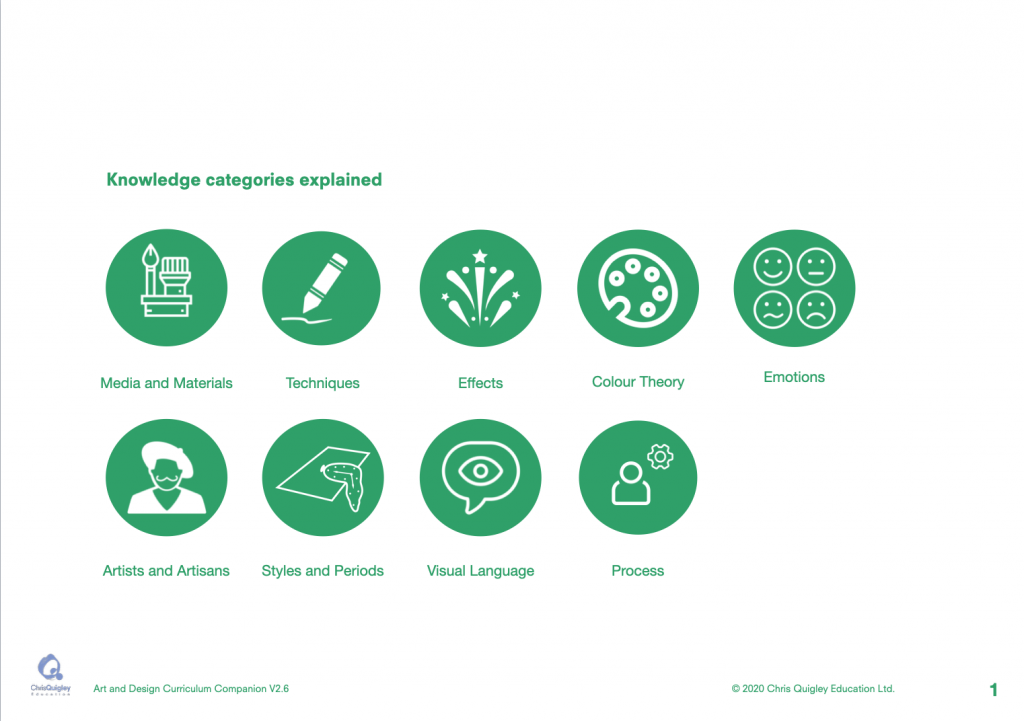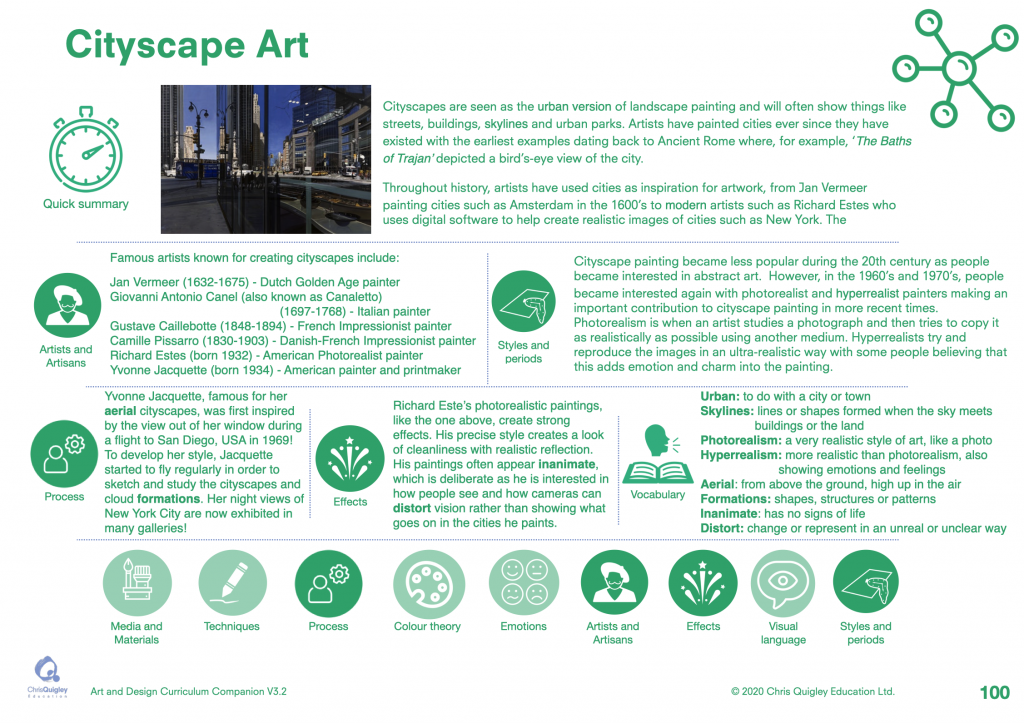
Gary has been busy with our new Curriculum Companion for Art and Design. In a previous post entitled The problem with knowledge ‘organisers’, I wrote about the importance of presenting further information to students in categories to help them relate that new information to previous knowledge and, in doing so, help them to build a schema. In our latest creation, being printed as I write, we have used the following knowledge categories to help students build an art and design schema:

Knowledge categories in art and design
Here is how Gary has organised knowledge around the relevant categories in Key Stage 1:

Using knowledge categories in an art and design topic, Key Stage 1
Here is another topic, this time from Key Stage 2. Notice how the same knowledge categories are used. Constant referencing back to knowledge students have in this category is vital in schema building.

Using knowledge categories in Key Stage 2
Here is one more, again from Key Stage 2:

Knowledge categories should be repeated throughout Years 1-6
Each time a new topic is started, teachers should ask students to retrieve from memory the knowledge they already have. This helps them to form a robust subject schema.
For more information on this and other Curriculum Companions see here.

.png)




